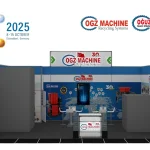The plastics industry offers many different types of polymers suitable for various needs and applications. The two most commonly used thermoplastics are HDPE (High-Density Polyethylene) and PP (Polypropylene). So, what are the differences between these two plastics, and which one should be preferred in which industries? Let’s take a closer look.
What is HDPE (High-Density Polyethylene)?
HDPE is a type of polyethylene known for its high density and rigidity. It is recognized for its chemical resistance, impact strength, and durability. Additionally, it is resistant to moisture and many chemicals.
Main Applications of HDPE:
- Packaging Industry: Milk, detergent, water, and oil bottles, jerry cans
- Piping Systems: Water and gas pipes, sewage pipes
- Agriculture: Irrigation pipes, greenhouse covers
- Durable Consumer Goods: Toys, trash bins
- Infrastructure: Cable protection pipes
What is PP (Polypropylene)?
PP is a semi-rigid, lightweight thermoplastic with high chemical resistance. It is known for its heat resistance and flexibility. Its low density makes it a popular choice for lightweight products.
Main Applications of PP:
- Automotive Industry: Interior trim parts, bumpers
- Packaging: Food containers, margarine tubs, yogurt cups
- Textiles: Carpet backing, nonwoven fabrics
- Household Items: Storage containers, kitchenware
- Medical and Healthcare: Syringes, medical packaging
Differences Between HDPE and PP
| Feature | HDPE | PP |
|---|---|---|
| Density | High | Low |
| Heat Resistance | Medium (up to ~120°C) | High (up to ~160°C) |
| Chemical Resistance | Excellent | Excellent |
| Flexibility | Less | More |
| Impact Strength | High | Medium |
| Transparency | Opaque | Semi-transparent/transparent possible |
Which Plastic Should Be Preferred in Which Industry?
- If strength and durability are required: HDPE should be preferred. HDPE is more durable, especially for pipes, jerry cans, and infrastructure products used outdoors.
- If heat resistance and lightness are important: PP stands out. PP is more suitable for automotive parts and microwave-safe food containers.
- If chemical resistance is needed: Both plastics perform well, but the choice should be made based on the application’s temperature.
- If flexibility and transparency are desired: PP is preferred for flexible and semi-transparent products.
Conclusion
HDPE and PP are two important plastics, each with its unique advantages. Choosing the right polymer according to the area of use and requirements directly affects the product’s performance and lifespan. Selecting the most suitable plastic for your industry and application is crucial in terms of both cost and efficiency.





